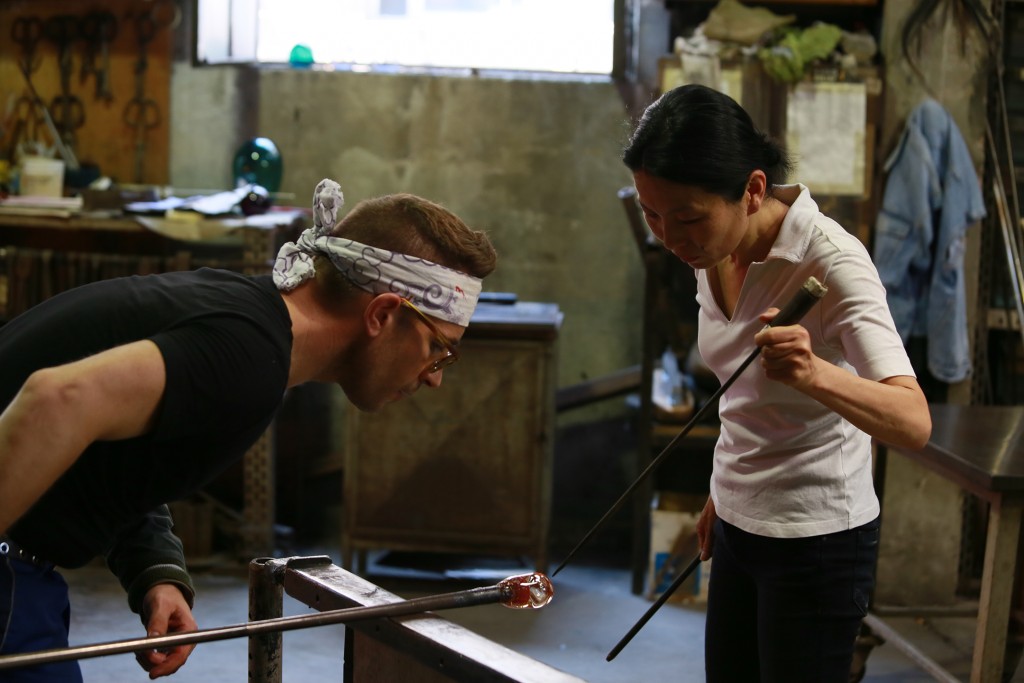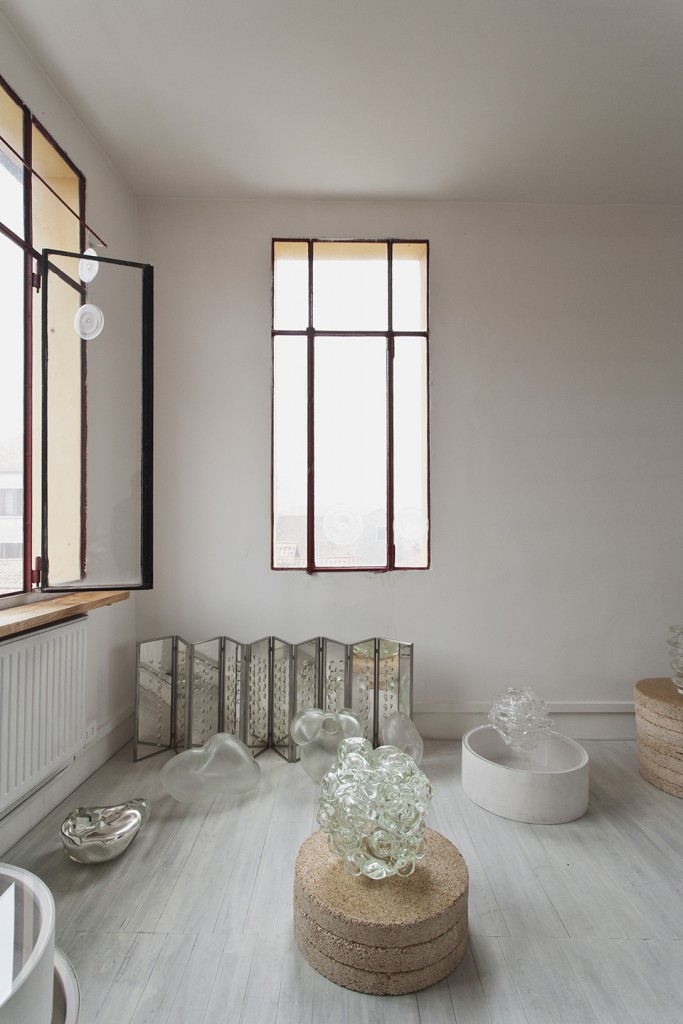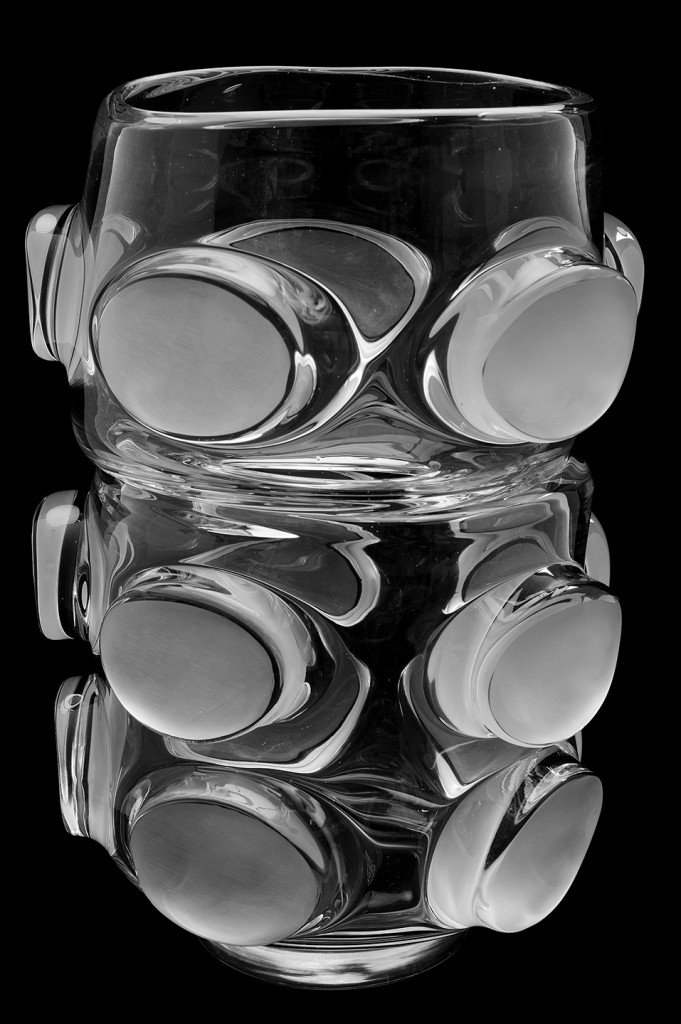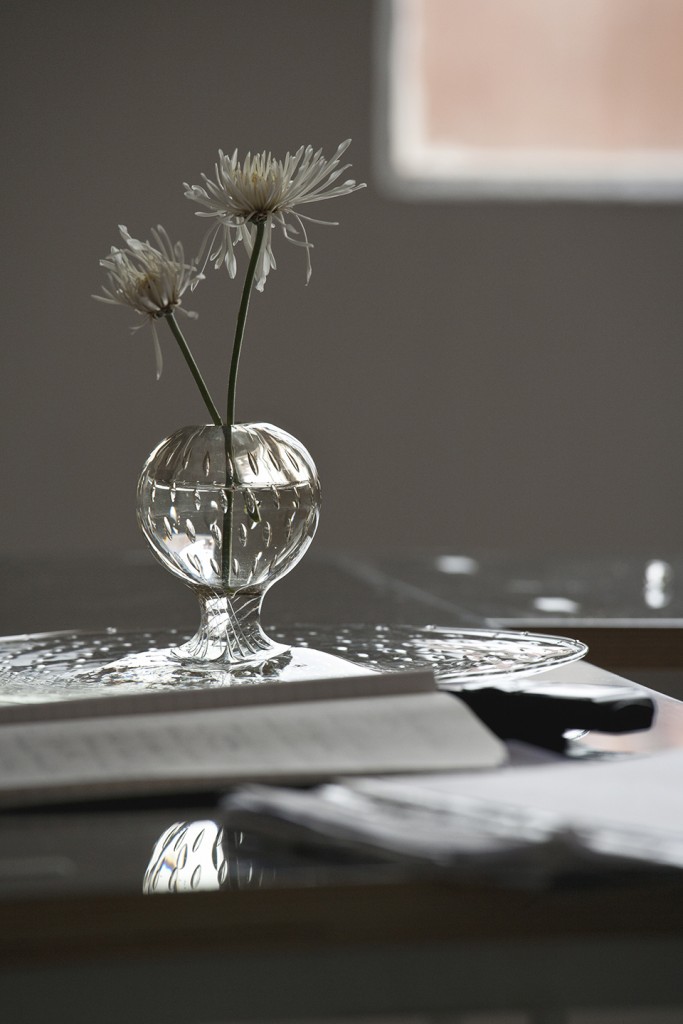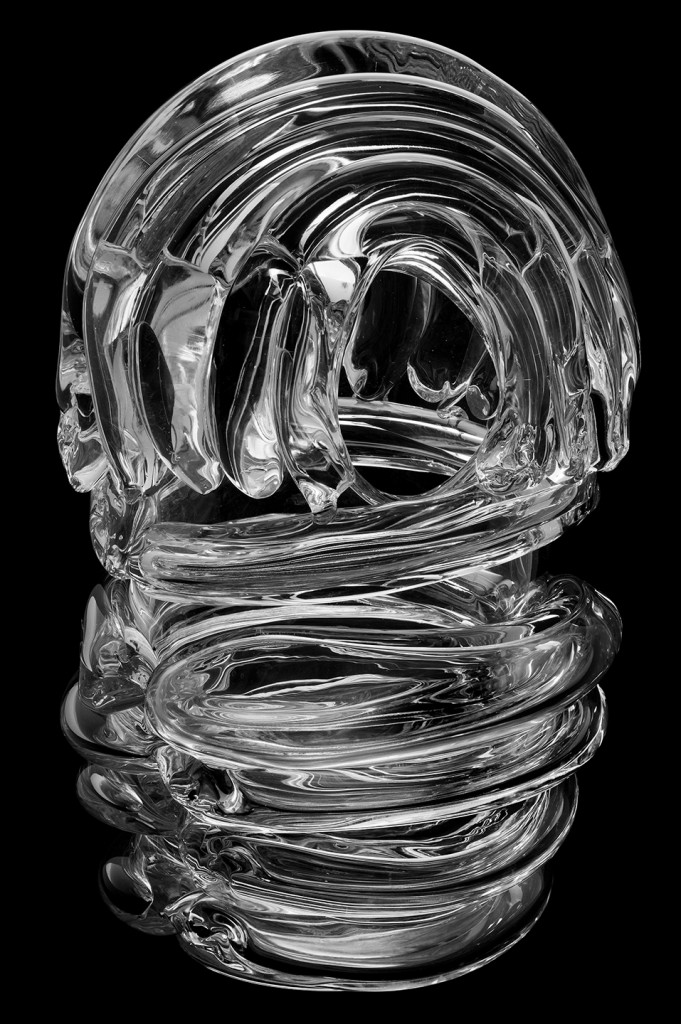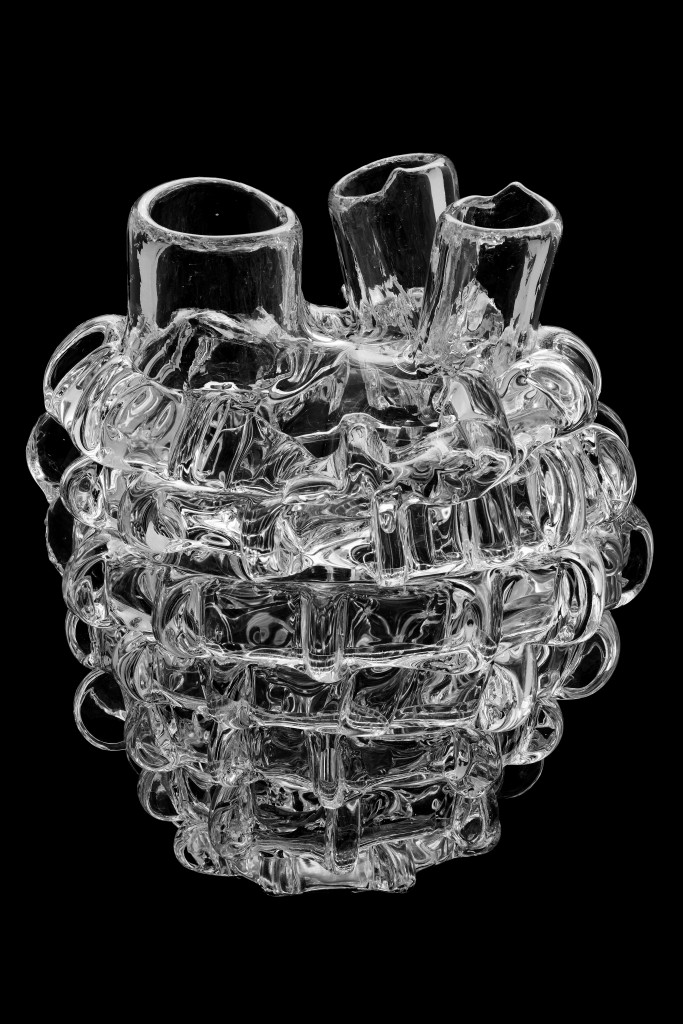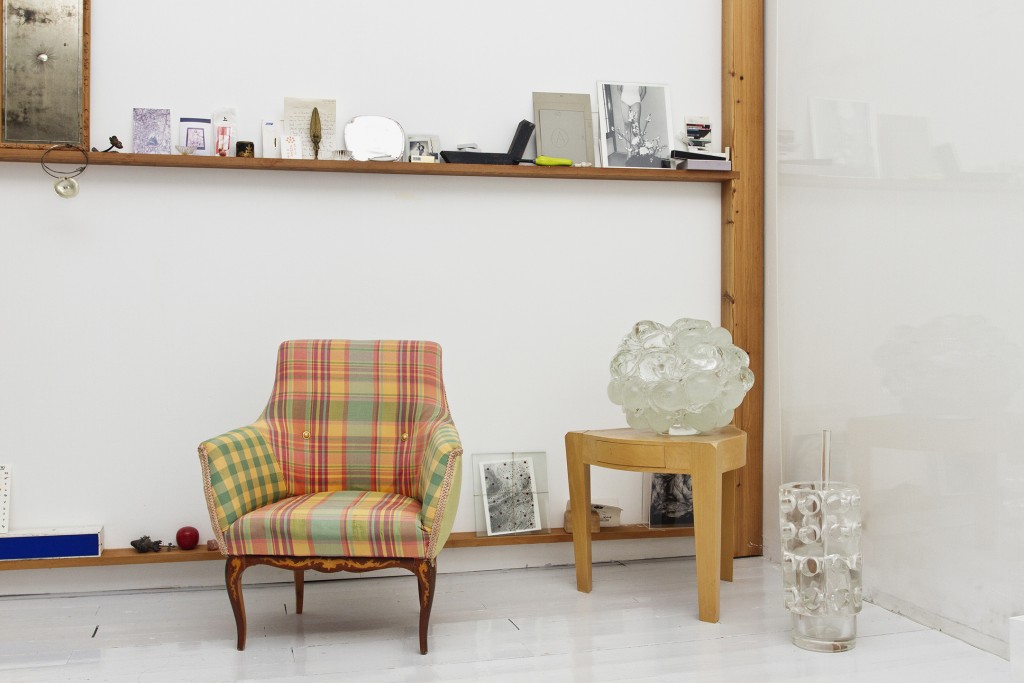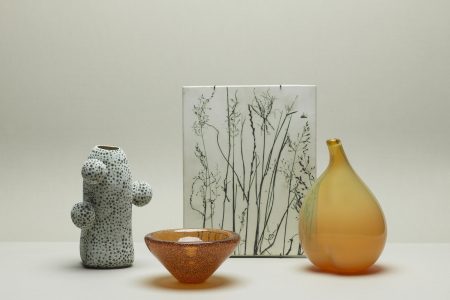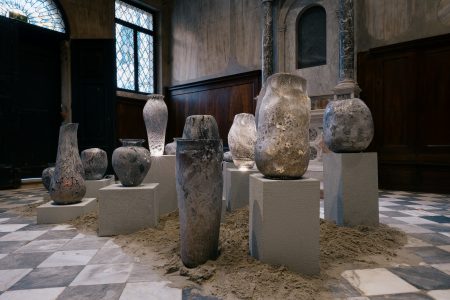Ritsue Mishima: Sculptor of Light
Japanese-born glass artist Ritsue Mishima has become known for her transparent, clear and unconventional glass objects. In an interview, she talks about shadows and working with glassmakers in Murano.
Ritsue Mishima’s handshake is impressively firm. She looks sharply in the eye and speaks a mixture of Italian, Japanese and English. When she talks, she communicates with her hands and body, drawing forms and gestures into air and onto her own frame.
Her studio above the roofs of Dorsoduro in Venice is white, bright and light with bare windows on three sides of the room that showcases her glassworks: thick, clear, blown glass in both uneven and deformed as well as refined and sophisticated shapes.
The city of La Serenissima is wrapped in thick November fog, which prevents the late-autumn rays of the sun reaching Mishima’s studio. Be there sunlight, her works come to life – light is the material she sculpts, glass a medium for sculpting light.
The studio is only a minute walk away from the Venice laguna, in which lie the islands of Murano with its dozens of glass factories and workshops producing world-famous Murano glass. A fifteen-minute boat ride across the laguna ends to a modest, low, long building, a glass factory where Mishima produces her glassworks with a glass master and glassmakers.
Unlike her studio, the small glass factory is stained dark with decades of fires in its furnaces. High windows of the factory are covered with gray dirt that prevents seeing through them. The walls are covered with chalk pen writings, notes and calculations; small tables and shelves are bursting of glassmaking tools, powders and everything else needed when working on glass. Open mouths of the furnaces glare bright hot and hungry for melting glass, radiating heat to the factory.
Depths of Transparency
Glass artist Ritsue Mishima moved from Kyoto to Venice 26 years ago after working as a stylist for Japanese advertising agencies. Her story is a classic one – she fell in love with an Italian man and left her country of origin for Italy. The first love was followed by the second one: Venetian glass. She didn’t come to Venice to learn to work on glass like many artists do, but as a tourist who found the glass and decided to stay and learn more about it.
Having been inexperienced with glass as a material allowed Mishima to experience with it without preconditions on how one should work with it or what is possible and what is considered impossible with the material. One of the broken preconditions of traditional, colourful Murano glass is that Mishima’s works are always clear and transparent. She has never worked on coloured glass and doesn’t see that she ever would.
“Transparent glass changes by light,” she explains. “When the moon rises, when the sun sets – it’s always different. There are different levels of transparency in glass, and these levels create depth to the material. The deeper the material, the more the transparency is distorted.”
“I always try to express myself through glass. I walk a lot to get inspiration and try not to think too much. I respect inspiration more. I don’t design, as draw on paper, a lot. I create according to the material, glass, and follow the energy of the material instead of doing against the energy.”
Mishima states that she’s a sculptor of light – and with light come shadows. Her glass installation for champagne house Perrier-Jouët for Design Miami 2015 is entitled ‘All’ombra della Luce’, which translates into ‘In the Shadow of Light.’
“There is no light without a shadow,” she says. “With shadows, you can see the shape. There is a need for combination of both.”
Learning from the Masters
Like many other glass artists working in the Murano islands in Venice, Ritsue Mishima closely collaborates with Venetian glassmakers and a glass master she has worked from the beginning, since 1996. So close is their relationship in work that Mishima even says she would seriously need to consider continuing working with glass at all if the glass factory she works in closes in the future for some reason – not that the vision is likely or anywhere in sight at the moment, though.
In Murano, she works with the glass master Andrea Zilio at Anfora Murano Glass Factory. The work of the master and his glassmakers is a seamless collaboration, in which everyone knows their positions and roles every second of working on a piece of glass. One begins the movement that is followed by the second and assisted by the third. In the beginning of collaborating with Mishima, the small factory employed three glassmakers, now four. The smooth collaboration results from an ancient apprentice practice, in which a glassmaker begins to work in a glass factory as an apprentice. Becoming a glass master is a 10–15-year journey.
“In the beginning, the Italian glassmakers didn’t like my transparent glass so much, but now they do and even copy my ideas,” Mishima states. “I learn from the masters and the masters learn from me. We are kind of an orchestra. Masters are great and I let them do as they want, while I only do some direction on small details and assist them.”
“It takes about 1 hour and 20 minutes to create an object, maximum of 1,5 hours,” she continues. “Creating glass – blowing and working with fire – is not the kind of job you can do for three hours. It’s risky because the job is constantly alternating cool and hot materials.”
From Miami to Brussels
Over the years, Mishima’s work has been exhibited in Milan, London, Rotterdam, Tokyo, Brussels, Berlin, San Francisco and Kyoto, her city of origin. Her glass pieces are part of collections of Musée des Arts Décoratifs in Paris, Museum Boijmans van Beuningen in Rotterdam, Alter Hof Herding Collection in Coesfeld, Germany, and many more.
In Brussels, Mishima has long collaborated with Brussels-based Galerie Pierre Marie Giraud, which also brings her new work to the city every second year. Her previous exhibition in Brussels took place earlier in 2015, and the next one will be seen in 2017, although the artist says that the dates of the next exhibition haven’t yet been decided.
For the ongoing Design Miami fair for collectible design, Mishima has collaborated with French champagne house Perrier-Jouët. The results of the collaboration – a wide-scale glass installation and a set of blown glass bowls for a champagne bottle and a set of champagne glasses – can be viewed at the fair in Miami. The collaboration will continue throughout the year 2016, after which the set of limited-edition glass bowls will become a part of the Perrier-Jouët art collection.
“I think my job is the most wonderful, beautiful job,” Ritsue Mishima finishes. “I enjoy working with Italian glassmakers. Think of it – we create only one object by using a technique that has such a long story, reaching a thousand years.” •
Ritsue Mishima’s glass installation ‘All’ombra della luce,’ commissioned by champagne house Perrier-Jouët, at Design Miami in Miami, USA, on 2–6 December 2015.
Read also –
TLmag online 2 December 2015
Perrier-Jouët: Unique Glass for Design Miami

